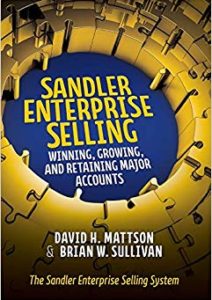Summer, unfortunately, is in its waning days and the calendar year has passed the halfway point. In your selling year, there have likely been many positives and negatives to deal with but with a heavy dose of sales optimism, you know there’s still time to take actions to drive improvement, hit your year-end numbers and close strong.
But what to do?
Remember that SWOT analysis you conducted with your team, or perhaps didn’t conduct, to kick off the year – that annual planning process assessing those four well-known and fundamental areas?
Strengths: The internal characteristics that provide a clear advantage.
Weaknesses: The internal attributes that place you at a disadvantage, limiting your ability to achieve your goals.
Opportunities: The positive external factors that increase your chances of succeeding.
Threats: The negative external factors that jeopardize your ability to succeed and increase your vulnerability.
Right. You remember, don’t you? And maybe your organization is unique and enlightened and you’ve built on your SWOT findings to develop real improvement plans that you’ve been acting on all year. But it’s more likely that the results of your SWOT session haven’t seen the light of day since you left that January meeting. All that valuable kickoff work was likely cast aside in the urgent need to sell and to get out of the gate fast. The SWOT flipcharts created in that session are probably folded up in someone’s office, gathering dust.
At this point, though there’s still time. Time to build on your strengths, fortify your weaknesses, exploit your opportunities and defend against your threats. How? By taking traditional SWOT to a much more actionable level.
With the SWOT analysis previously crafted as a baseline, refresh it with the experiences and lessons learned from the time already gone by. You can’t get those months back, but you can certainly learn from their experiences. And if you didn’t conduct that kickoff SWOT session, you can do so now as a team. But by enhancing fundamental SWOT, taking it to that next level. That actionable level that provides acceleration and fast, practical improvements to truly impact your numbers in the time remaining.
In Sandler Enterprise Selling, we do this through a tool we call “SWOT Accelerator”. It’s a simple concept, really, like most impactful sales actions are. The first step is to convert the fundamental SWOT findings, the output of what we refer to as the Build Step, into clear, defined initiatives through the second step – the Action Step. From the initial Build Step output, we craft the Action Step in four succinct categories:
1. Action: The principal action to be taken to drive improvement.
The outline of a plan, a template, or some other type of initial movement. But it must dictate real movement, real strategy, and real action.
2. Impact: The effect of the successful achievement of the results of the action.
Team dialogue and consensus create an early determination of the expected impact – high, medium or low, in the context of your business.
3. Accountability: The one person accountable for making the action happen.
Multiple individuals will have roles in driving the improvement, but it’s important to identify one accountable person. In Sandler Enterprise Selling, we use the RACI system to illustrate the clear responsibilities of each individual.
R = Responsible. The people who do the actual work to get the job done.
A = Accountable. The one person ultimately accountable.
C = Consulted. The people whose counsel is sought and with whom communication flows in both directions.
I = Informed. Those kept in the loop on progress. Typically, communication with them is only required in one direction but their input is welcome.
4. Date: The date by which the action is to be completed.
The realistic date by the action will be completed or put into play.
Once you’ve completed the Action Step for all identified strengths, weaknesses, opportunities and strengths, you then build a list prioritized by date, and impact level – the blueprint for attacking the most promising actions quickly, accelerating the improvements in the time remaining.
SWOT Accelerator is incredibly versatile and it can drive improvements in countless other organizational initiatives in addition to providing a clear framework to propel you to hit your year-end numbers. But in building an actionable plan to do just that, it’s hard to imagine a more productive summertime team activity.













Comments